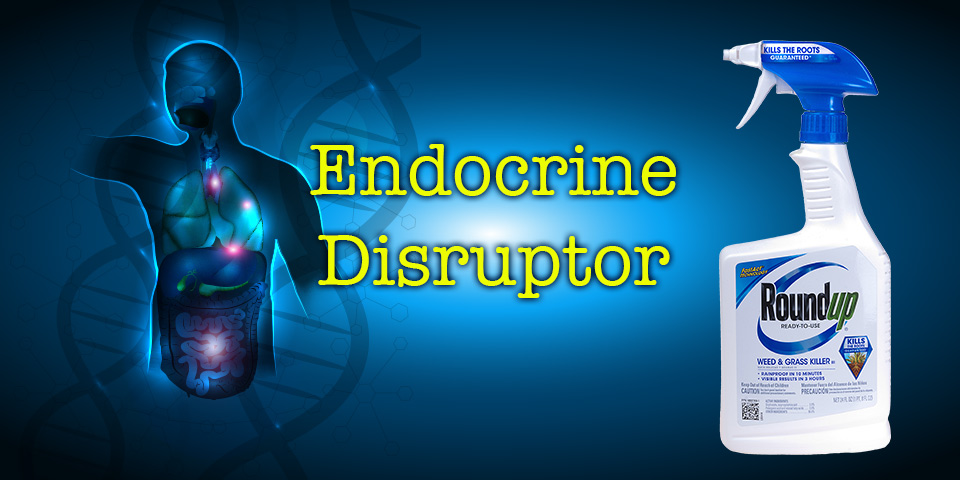
New review casts doubt on assumptions of Roundup safety
A new review of the scientific literature shows that glyphosate herbicides may be toxic below regulatory safety limits.
Dr Robin Mesnage and co-authors examined a number of different types of toxic effects to arrive at their conclusions, including liver and kidney toxicity, neurotoxicity, carcinogenicity, reproductive toxicity, and teratogenicity (ability to cause birth defects).
Unlike regulatory authorities, the researchers considered studies from the independent literature, as well as the few industry toxicity studies, conducted in support of regulatory approvals, that have been made public. They shared this approach of considering the entirety of the published literature with the World Health Organization’s cancer agency IARC, which recently concluded that glyphosate is a probable carcinogen.
The new review shows that endocrine (hormone) disruptive effects can occur below the doses deemed not to cause any toxic effects in industry studies performed for regulatory approvals. Endocrine disruption may increase the risk of certain types of cancer. Yet regulatory studies do not test low dose exposures for endocrine disruptive effects.
Neither the US nor the EU regulators have finalised their endocrine disruption testing requirements. That’s in spite of the fact that US Congress mandated the US EPA to develop an endocrine disruptor screening and testing programme in 1996 – yet it still has not done so. In Europe, legislation on endocrine disruptors has been delayed by industry lobbying, apparently helped along by the actions of the former EU chief scientific advisor, Anne Glover.
The conclusions of the new review stand in contrast with those of several Monsanto-sponsored reviews, which all concluded that the herbicide is safe.
Dr Robin Mesnage commented:
“This is the first independent systematic and peer-reviewed review to balance the dozens of Monsanto-sponsored reviews of Roundup and glyphosate toxicity, which have concluded that these substances are safe to use. Our review shows that there is a coherent body of evidence showing that toxic effects can occur below regulatory safety limits.
“Contrary to many claims, the toxicity of glyphosate herbicides has not been thoroughly assessed. For instance, lifelong toxicity tests in laboratory animals have never been done with the complete glyphosate formulations as sold and used. Even glyphosate alone has never been tested throughout the entire lifespan, because chronic tests are not carried out for the whole natural lifespan of the animals but are begun on young adults that are then killed before they get old. Yet clearly human beings are not euthanised at 60 years old. We need a clearer picture of how toxins affect the old as well as the young.
“Our study shows that glyphosate toxicity thresholds determined in regulatory assessments can be controversial. Thus a precautionary approach should be applied and glyphosate should be banned for all unnecessary uses. For example, there should be a moratorium on glyphosate spraying of crops for pre-harvest desiccation (drying down). This makes harvesting easier but is not necessary for the crop’s survival or growth.”
—
Potential toxic effects of glyphosate and its commercial formulations below regulatory limits
R. Mesnage, N. Defarge, J. Spiroux de Vendômois, G.E. Séralini
Food and Chemical Toxicology (2015), doi: 10.1016/j.fct.2015.08.012
http://www.sciencedirect.com/science/article/pii/S027869151530034X
Abstract
Glyphosate-based herbicides (GlyBH), including Roundup, are the most widely used pesticides worldwide. Their uses have increased exponentially since their introduction on the market. Residue levels in food or water, as well as human exposures, are escalating. We have reviewed the toxic effects of GlyBH measured below regulatory limits by evaluating the published literature and regulatory reports. We reveal a coherent body of evidence indicating that GlyBH could be toxic below the regulatory lowest observed adverse effect level for chronic toxic effects. It includes teratogenic, tumorigenic and hepatorenal effects. They could be explained by endocrine disruption and oxidative stress, causing metabolic alterations, depending on dose and exposure time. Some effects were detected in the range of the recommended acceptable daily intake. Toxic effects of commercial formulations can also be explained by GlyBH adjuvants, which have their own toxicity, but also enhance glyphosate toxicity. These challenge the assumption of safety of GlyBH at the levels at which they contaminate food and the environment, albeit these levels may fall below regulatory thresholds. Neurodevelopmental, reproductive, and transgenerational effects of GlyBH must be revisited, since a growing body of knowledge suggests the predominance of endocrine disrupting mechanisms caused by environmentally relevant levels of exposure.










